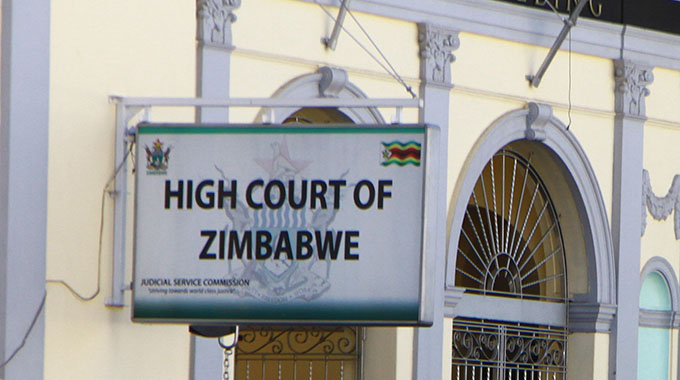World Bank upgrades Zim status

Africa Moyo Deputy News Editor
The World Bank has upgraded Zimbabwe from a “Low Income Economy” to a “Lower Middle Income Economy”, signifying a positive shift that is in tandem with President Mnangagwa’s vision of transforming Zimbabwe into an “Upper Middle Income” economy by 2030. The classification of Zimbabwe as a lower-middle income economy is for the period 2019 to 2020 and is effective from July 1 this year.
Last year, Zimbabwe was in the low income economy category with a gross national income (GNI) per capita of US$910.
Lower-middle income economies have a GNI per capita of US$1 790.
The bank said for the current 2020 fiscal year, low-income economies are defined as those with a GNI per capita, calculated using the World Bank Atlas method of US$1 025 or less in 2018.
Lower middle-income economies are those with a GNI per capita of between US$1 026 and US$3 995; upper middle-income economies are those with a GNI per capita of between US$3 996 and US$12 375; high-income economies are those with a GNI per capita of US$12 376 or more, added the World Bank.
Classifications are determined by two factors — a country’s GNI per capita, which can change with economic growth, inflation, exchange rates, and population; and classification thresholds, which are adjusted for inflation annually using the Special Drawing Rights (SDR) deflator.
Zimbabwe is joined in the lower middle income economy category by Senegal, Angola, Ghana and Comoros.
Speaking in Kigali, Rwanda, yesterday before returning home after attending that country’s 25th Liberation Day, President Mnangagwa said he was “not sure if it is an upgrading” by the World Bank since he felt the country was already there.
“I think we were already there. They have recognised that we are at that level,” said President Mnangagwa.
“It is actually good news to our people because, then, they will feel that what they are doing is getting recognised, not by ourselves, but international institutions of repute like the World Bank.
“We are actually happy that they have recognised the efforts we have done since the new dispensation (came in)”.
Economist Mr Persistence Gwanyanya told The Herald last night that the classification of the country as a lower-middle income economy “is a welcome development as it shows that at least the economy is growing”.
“This means on average, each person in Zimbabwe now has higher income, which assuming all was normal, should translate into better living standards,” said Mr Gwanyanya.
“The growth in the per capita economy shows that the country is progressing well towards Vision 2030, which seeks to achieve an Upper Middle Income status by 2030.”
He said through the short-term economic blueprint, Transitional Stabilisation Program (TSP), Government seeks to achieve economic stability to grow the economy.
“Now it is comforting that we have made good progress on the fiscal front by rebalancing the fiscal position through achievement of surpluses.
“These fiscal efforts will be supported by the recent currency reforms that saw the multiple currency system being revoked in favour of a mono-currency system. All these are expected to stabilise the economy by December 2020 when TSP comes to an end,” said Mr Gwanyanya.
Government removed the multiple currency regime recently through Statutory Instrument 142 of 2019, which also introduced a local currency, the Zimbabwe dollar.
Industrialists say a “softer currency” was critical for economic growth insofar as it drives the export business, by reducing prices on the international market.
The local currency also reduces the cost of production.
Mr Gwanyanya said after stabilising the economy, Government should start talking “seriously about re-industrialisation” for sustained growth and development, which are key ingredients for taking the economy to its Vision 2030.
Government plans to accelerate re-industrialisation following the launch of the Zimbabwe National Industrial Policy last week, which is anchored on value addition, increasing employment levels and promoting a culture of savings, among other pillars.
The Local Content Policy is also seen as critical in driving Vision 2030.
President Mnangagwa’s Government has reiterated its determination to ensure the country attains “Vision 2030”, riding on the ‘Zimbabwe is Open for Business’ mantra, which seeks to attract both local and foreign investment.
The amendment of the previously contentious Indigenisation and Economic Empowerment Act, has already seen flocking to explore opportunities with others such as Karo Resources sealing a US$4,2 billion platinum project in Ngezi.
Other investment deals include the US$3 billion Darwendale platinum project, the US$50 million tiles manufacturing firm by Chinese firm, Sunny Yi Feng in Norton; the US$153 million Robert Gabriel Mugabe International Airport expansion by Jiangsu International of China; the US$1,5 billion Hwange Thermal Power Station expansion and several roads projects that are underway in the country.
The fight against corruption is also primed to help the country attain Vision 2030.







Comments